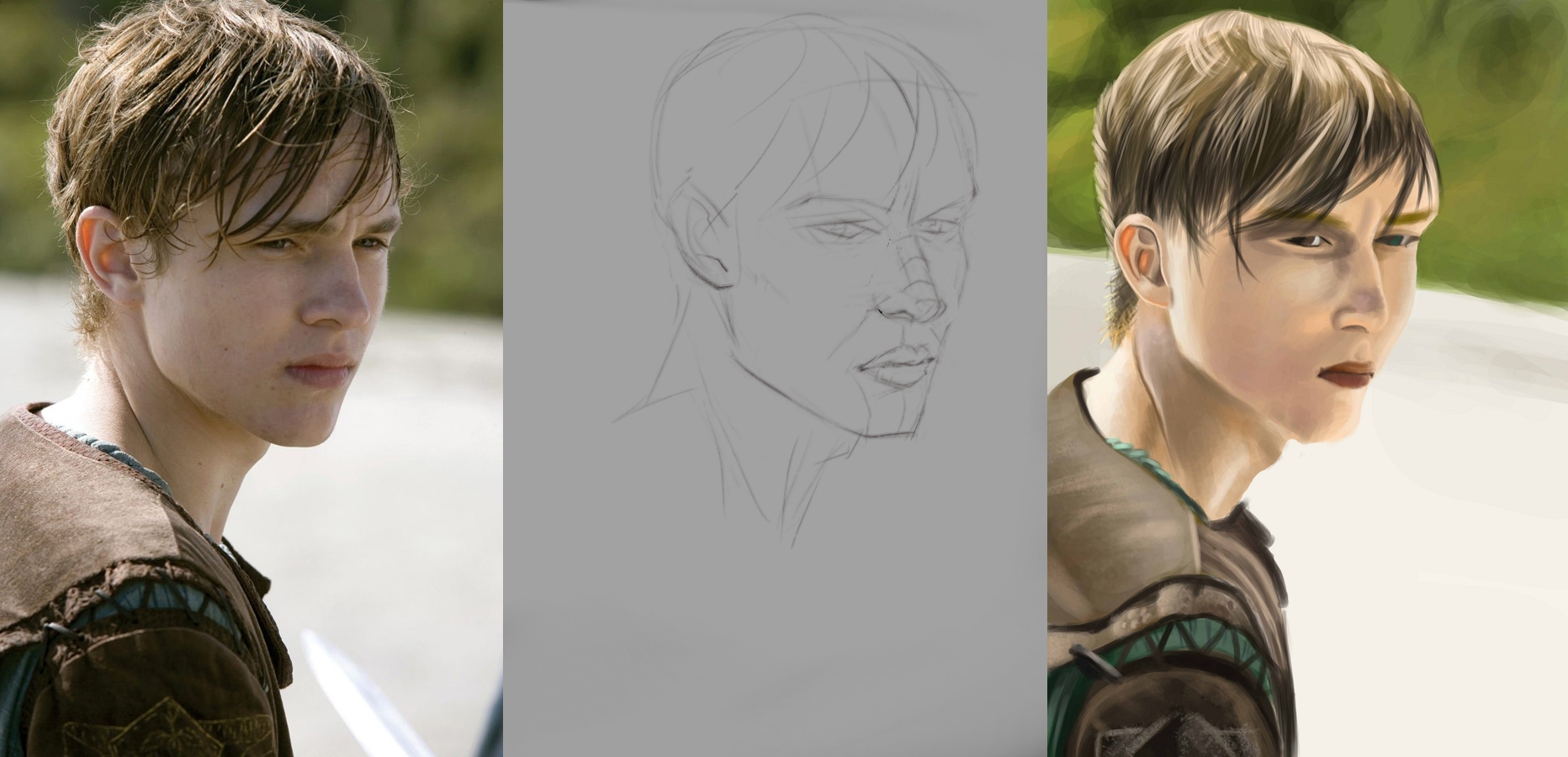Heya, Some quick thoughts and tips for you.
1. Speed comes as a result of a large amount of practice in the fundamentals. You simply CANNOT shortcut this. Forget about speed as your main goal outcome for now, and focus on your fundamental skills. You can still do quick paintings ofc, but focus on improving your fundamental skills more and you'll thank yourself later for doing this.
2. Structural accuracy.
You need to work on prioritising this first before you get all excited about learning to finish a coloured copy of a photo in two hours. IMO your lack of structural fundamentals are bringing the quality of your studies down by a large amount, you're probably not learning as efficiently, and are learning or at least retaining bad habits. As a result this should be prioritised immediately and addressed in your future studies.
One example of what I mean is doing a structural line drawing before painting where you nail accurate proportions, planes of the face etc before you paint a stroke. or even as the main focus of the study alone, setting aside painting at all. This way you can avoid making large mistakes / deformations that are exhibited in your study.

Resources
http://www.dorian-iten.com/accuracy/
Get everything on his site, watch them and start to apply to your approach. I believe most of it is pay what you want (0+)
www.drawabox.com
Do all the exercises on that site. They focus on fundamentals
Find any book by Andrew Loomis, they all contain good information. Read and make any studies from those as you work through them.
For faces specifically, google Asaro heads and do studies of those, learn the major planes of the head. Figures and anatomy will need even more focus as you develop.
![[Image: 1395670599047.jpg]](https://warosu.org/data/ic/img/0016/87/1395670599047.jpg)
3. Study purpose? These studies seem to be you attempting to simply copy what you see rather than focus on a very specific aspect of the image that you wish to analyse and learn from. That's fine, but it will be more efficient to focus on some specific things you want to learn from each study and then MOST importantly APPLY to something you do yourself that isn't a study. If you don't do the application soon after you're basically not going to retain as well what you learned from the study
Watch this. It's a breakdown of the above idea.
https://www.youtube.com/watch?v=8kfK46nruKM
Slow and steady wins the race. Don't get ahead of yourself too much, as I sense you might be heading that way.
4. Colour studies.
Careful what photos you use to study. Camera lenses are not human eyes and often studying only from photos can skew your understanding of colour. Do regular still life or plein air studies. Probably one of the best exercises you can do to understand realistic light and colour. Read Colour and Light by James Gurney, and read up on his blog. Lots of incredibly useful information.
Good luck!
1. Speed comes as a result of a large amount of practice in the fundamentals. You simply CANNOT shortcut this. Forget about speed as your main goal outcome for now, and focus on your fundamental skills. You can still do quick paintings ofc, but focus on improving your fundamental skills more and you'll thank yourself later for doing this.
2. Structural accuracy.
You need to work on prioritising this first before you get all excited about learning to finish a coloured copy of a photo in two hours. IMO your lack of structural fundamentals are bringing the quality of your studies down by a large amount, you're probably not learning as efficiently, and are learning or at least retaining bad habits. As a result this should be prioritised immediately and addressed in your future studies.
One example of what I mean is doing a structural line drawing before painting where you nail accurate proportions, planes of the face etc before you paint a stroke. or even as the main focus of the study alone, setting aside painting at all. This way you can avoid making large mistakes / deformations that are exhibited in your study.

Resources
http://www.dorian-iten.com/accuracy/
Get everything on his site, watch them and start to apply to your approach. I believe most of it is pay what you want (0+)
www.drawabox.com
Do all the exercises on that site. They focus on fundamentals
Find any book by Andrew Loomis, they all contain good information. Read and make any studies from those as you work through them.
For faces specifically, google Asaro heads and do studies of those, learn the major planes of the head. Figures and anatomy will need even more focus as you develop.
![[Image: 1395670599047.jpg]](https://warosu.org/data/ic/img/0016/87/1395670599047.jpg)
3. Study purpose? These studies seem to be you attempting to simply copy what you see rather than focus on a very specific aspect of the image that you wish to analyse and learn from. That's fine, but it will be more efficient to focus on some specific things you want to learn from each study and then MOST importantly APPLY to something you do yourself that isn't a study. If you don't do the application soon after you're basically not going to retain as well what you learned from the study
Watch this. It's a breakdown of the above idea.
https://www.youtube.com/watch?v=8kfK46nruKM
Slow and steady wins the race. Don't get ahead of yourself too much, as I sense you might be heading that way.
4. Colour studies.
Careful what photos you use to study. Camera lenses are not human eyes and often studying only from photos can skew your understanding of colour. Do regular still life or plein air studies. Probably one of the best exercises you can do to understand realistic light and colour. Read Colour and Light by James Gurney, and read up on his blog. Lots of incredibly useful information.
Good luck!







